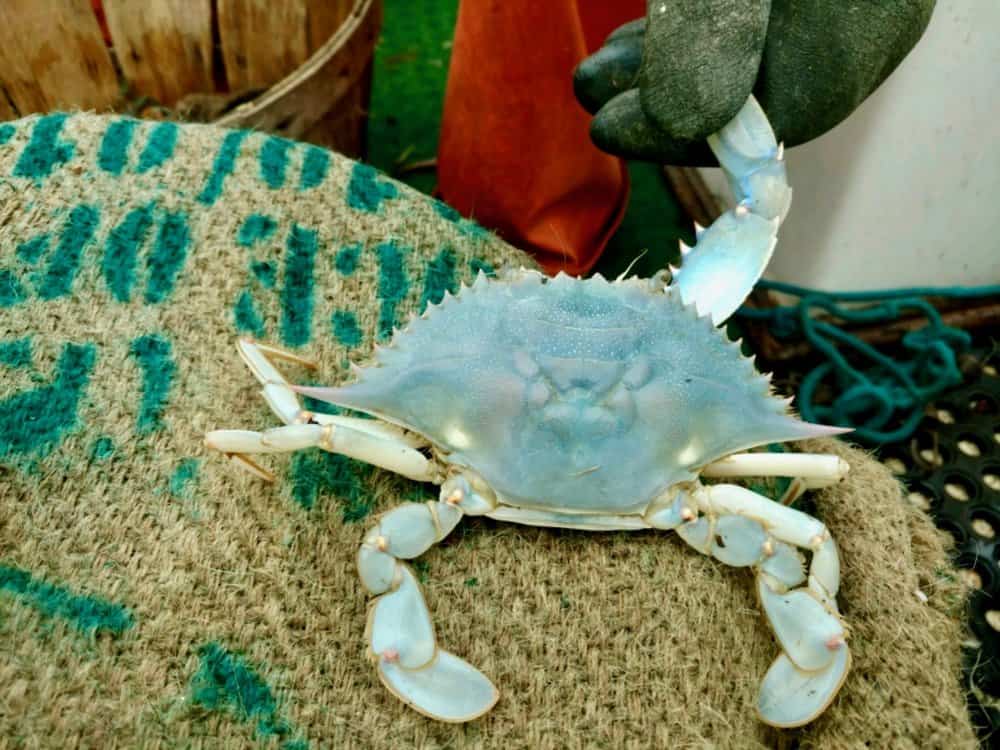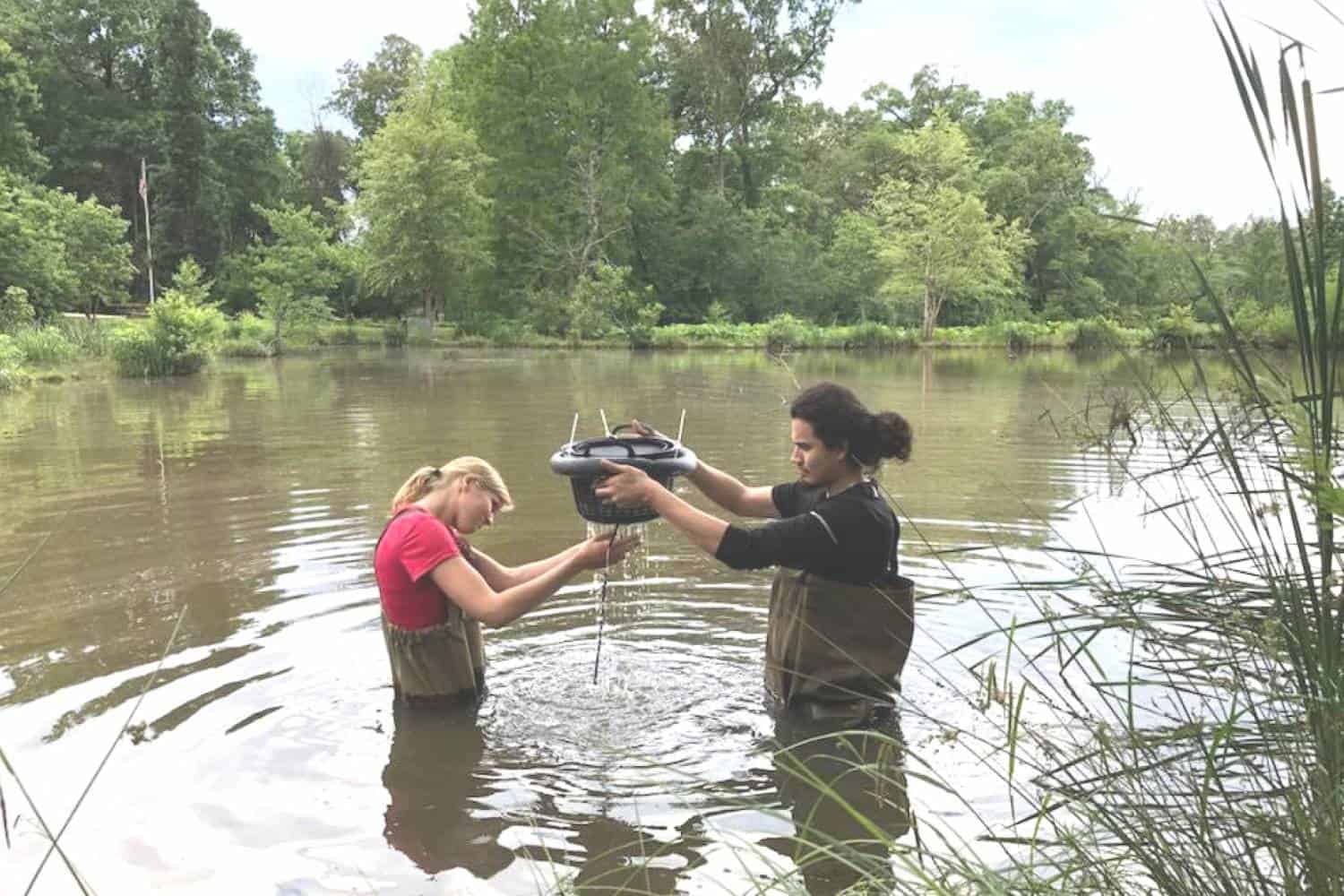The Virginia Institute of Marine Science (VIMS) recently received a seldom-seen donation: a solid-blue blue crab.
Photo: Jim McInteer/Virginia Institute of Marine Science.Jim McInteer and Alan Payne found the male crustacean in their pot in the York River and donated the crab to the lab of Professor Rom Lipcius at VIMS. McInteer says he’s encountered blue crabs with unusual variations in color, but this all-blue blue was a first. “I’d read about how they occur every now and then, so we knew what we had,” he says.
The crab has since died, but VIMS marine scientist Gabby Saluta says researchers at the institute will freeze and keep it for future study.
Blue crabs are recognizable by their brown/beige bodies and blue legs. As for this crab’s appearance, Jeff Shields, a VIMS professor and crustacean ecology expert, says “this blue crab is most likely an extremely rare genetic mutation that has altered the amount of certain pigments in the shell, the crab’s ability to bind to proteins in the shell, or the number of pigment-producing cells in the skin beneath the shell.”
He notes that albino, purple, and even orange crabs have been reported, and the team at VIMS has seen a handful of blue crab variations including albinos, partial albinos, and even crabs known as mosaics whose bodies are half one color, half another color.
Shields says that he’s encountered several crabs from the Chesapeake Bay that had purple coloration caused by parasites, but McInteer’s find doesn’t seem to have been infected and is “definitely a rare beauty.” Lipcius says the last all-blue blue crab was reported to the Institute nearly a decade ago in 2009.
–Laura Boycourt




